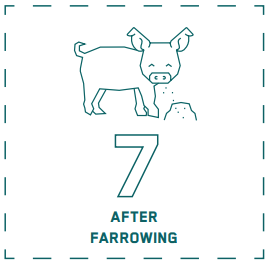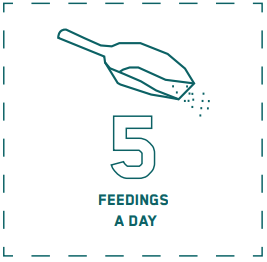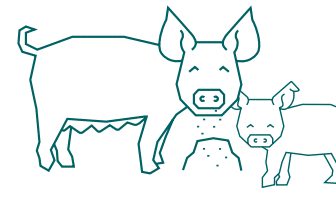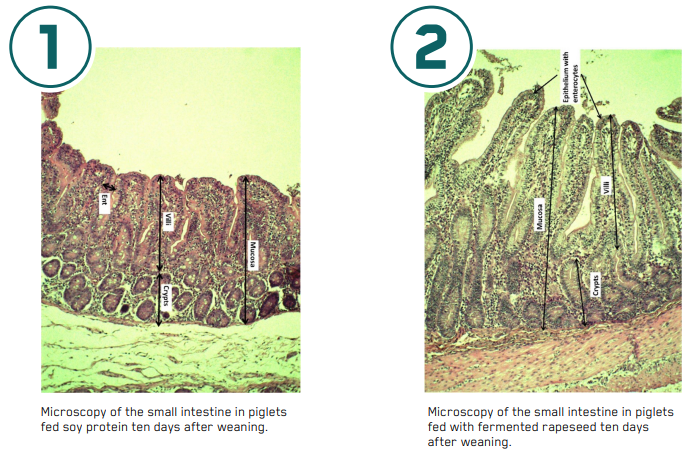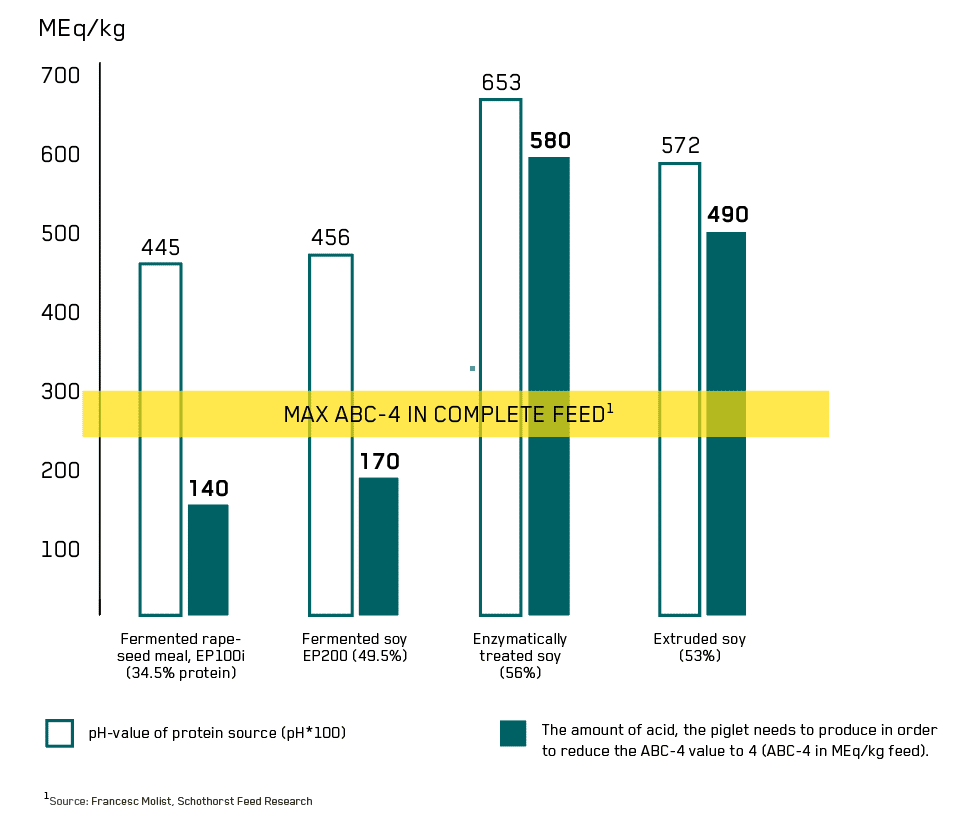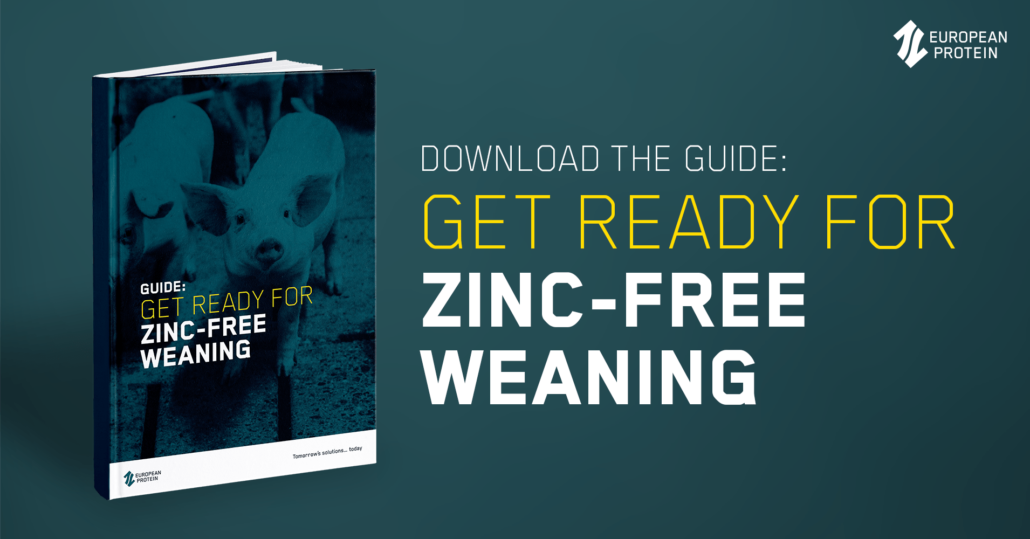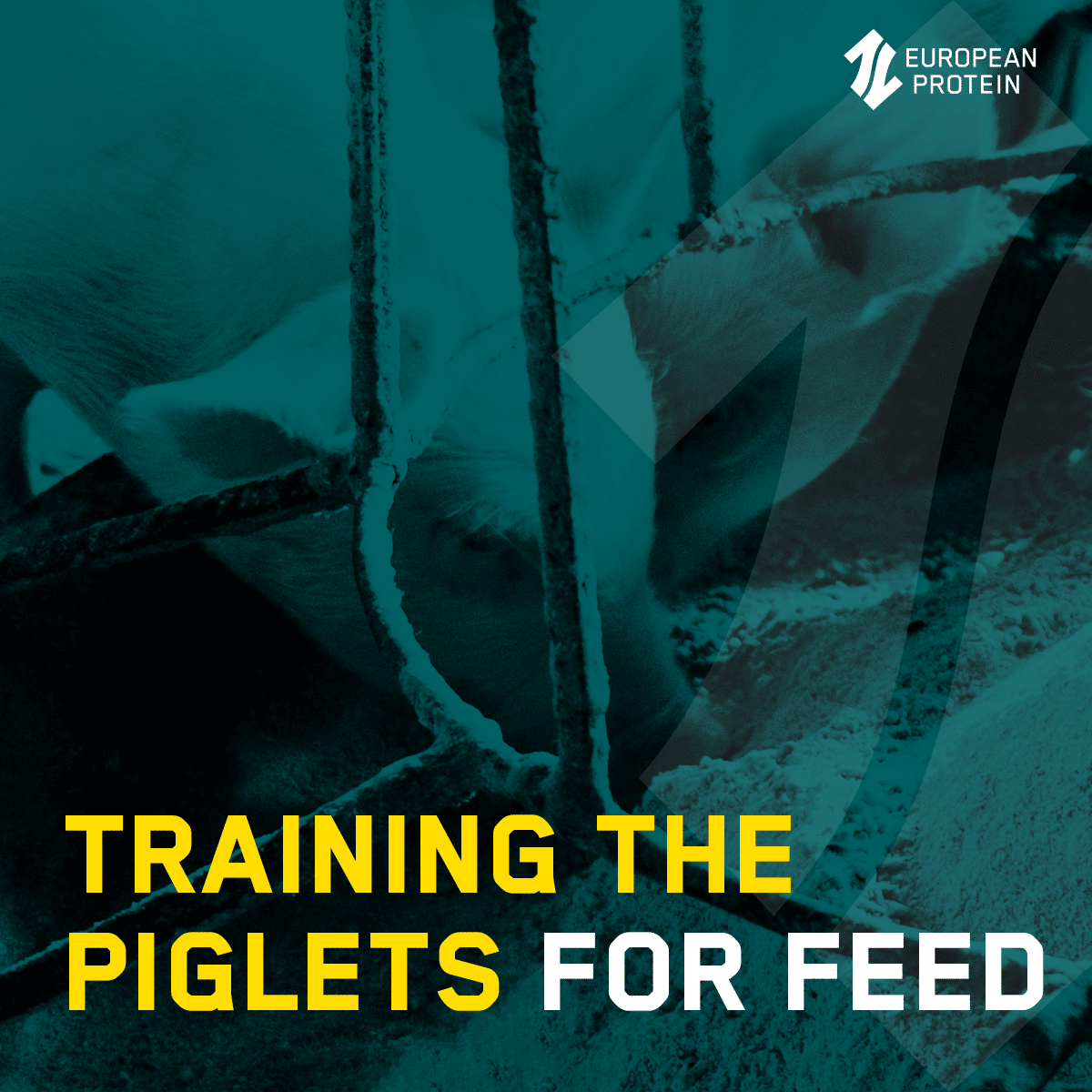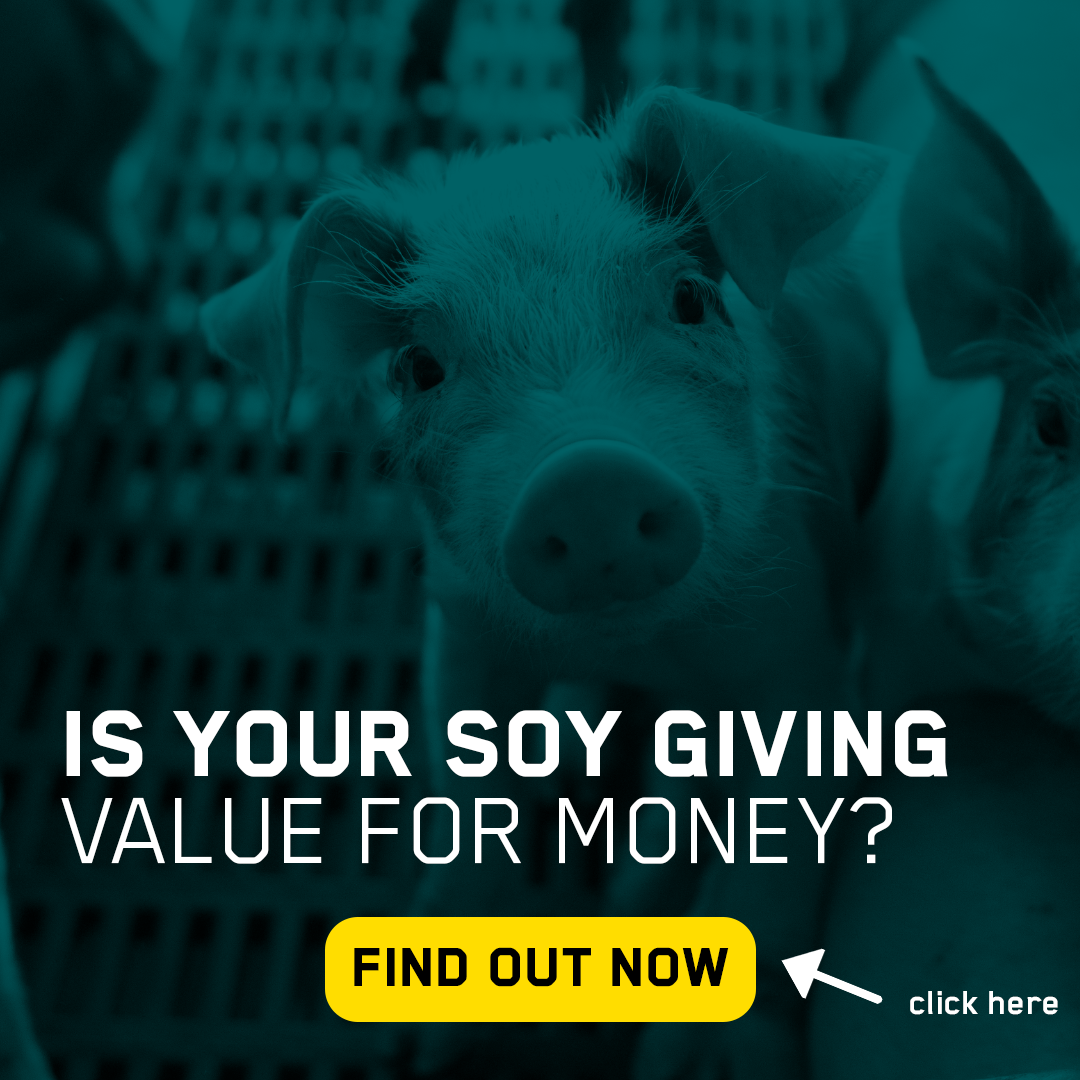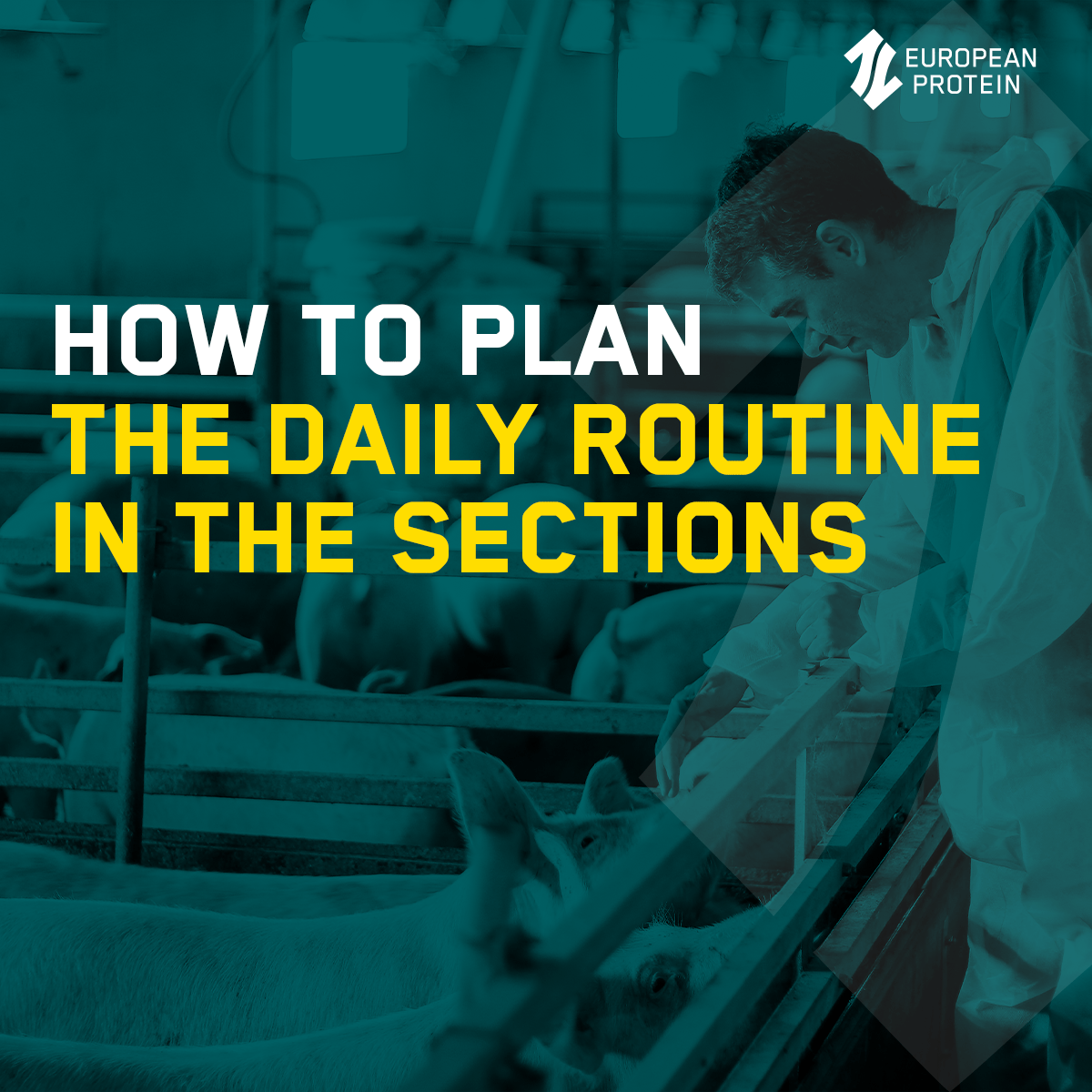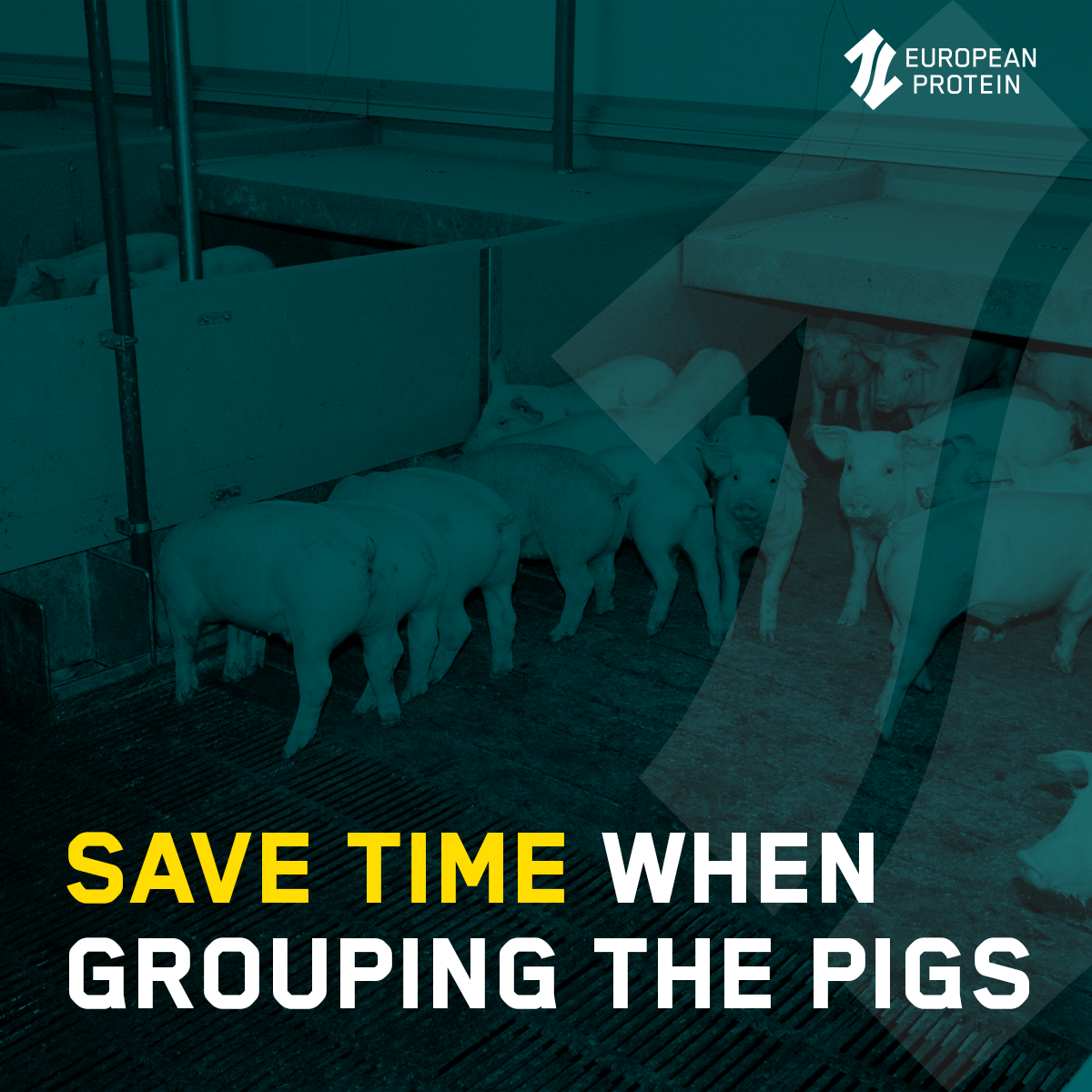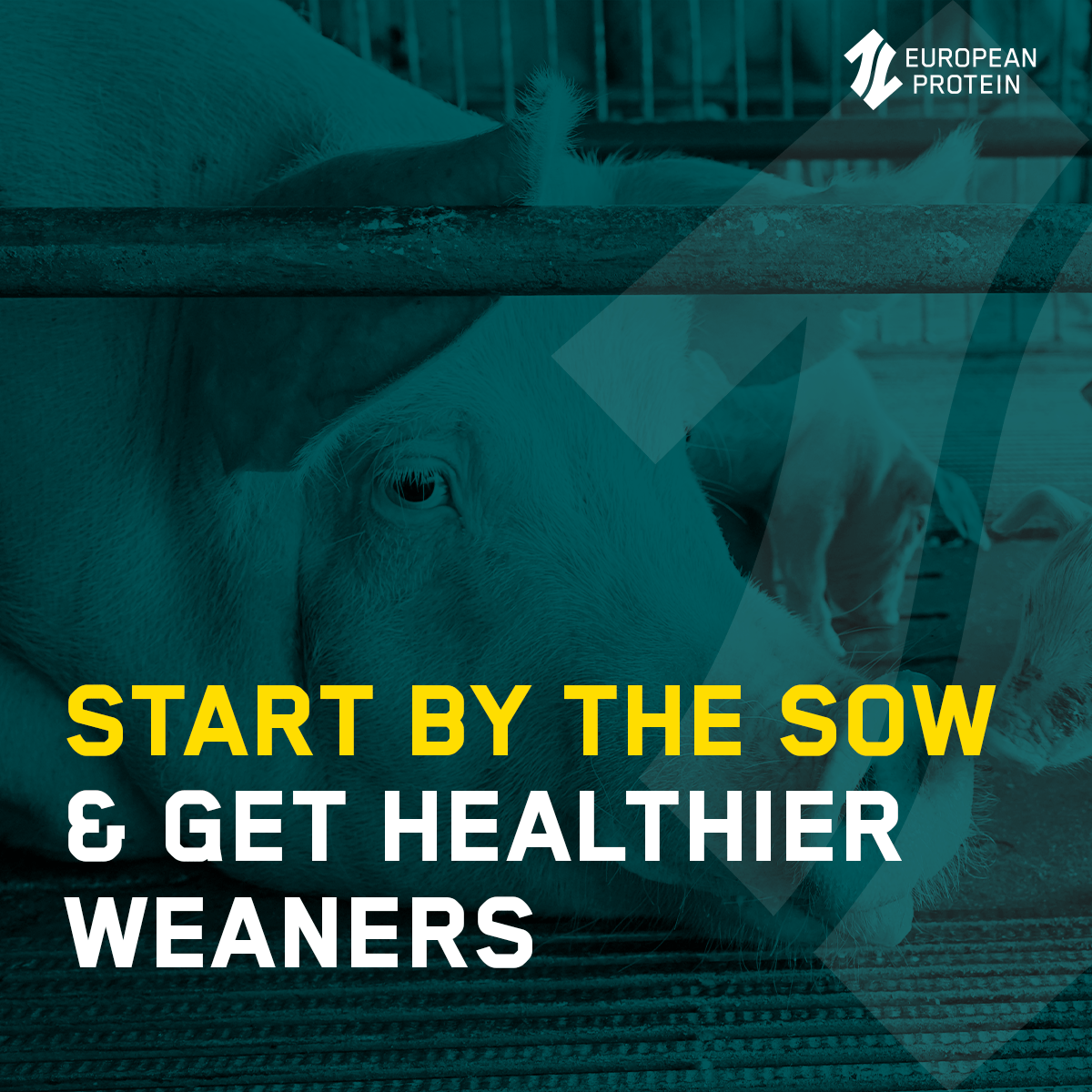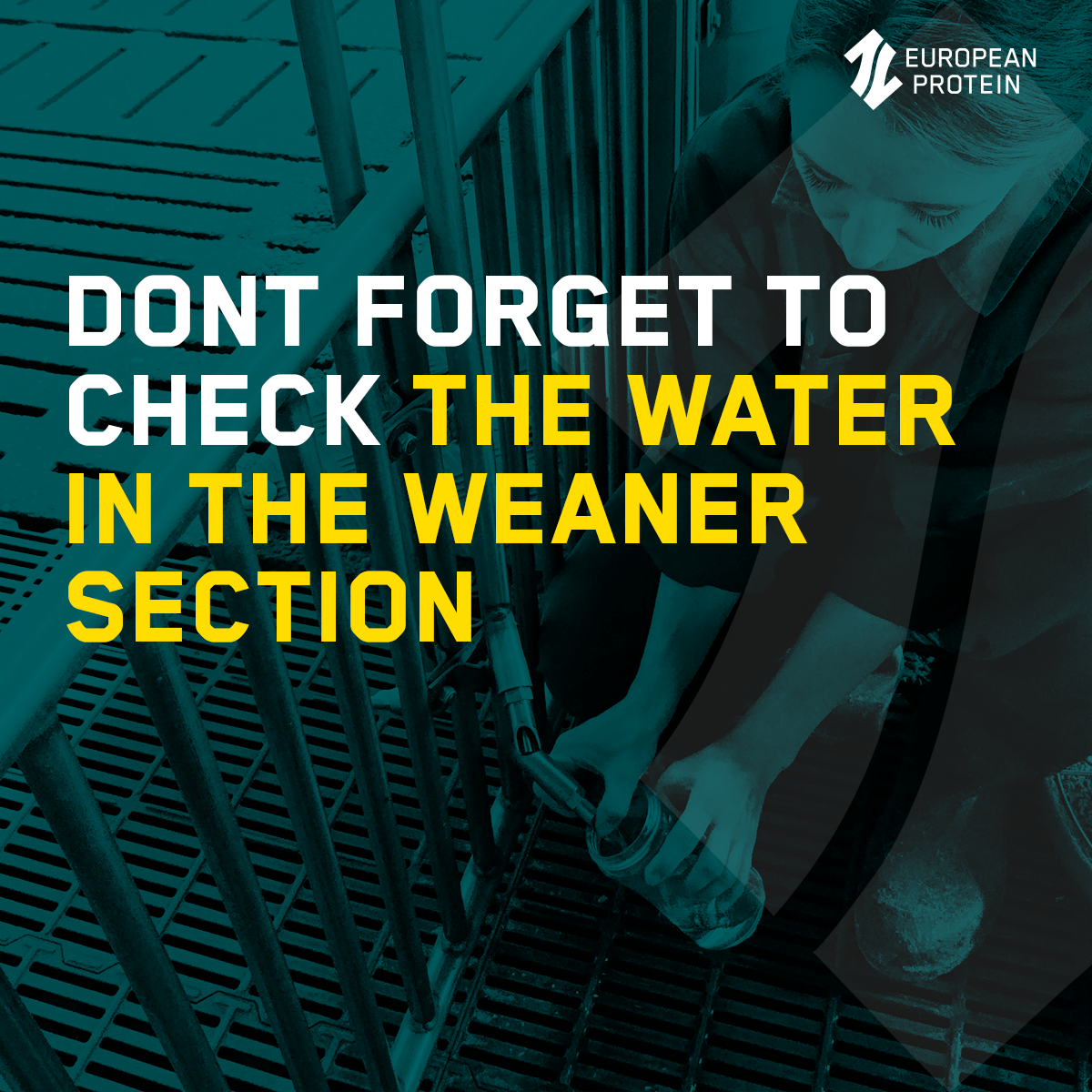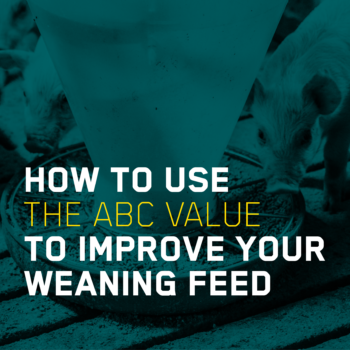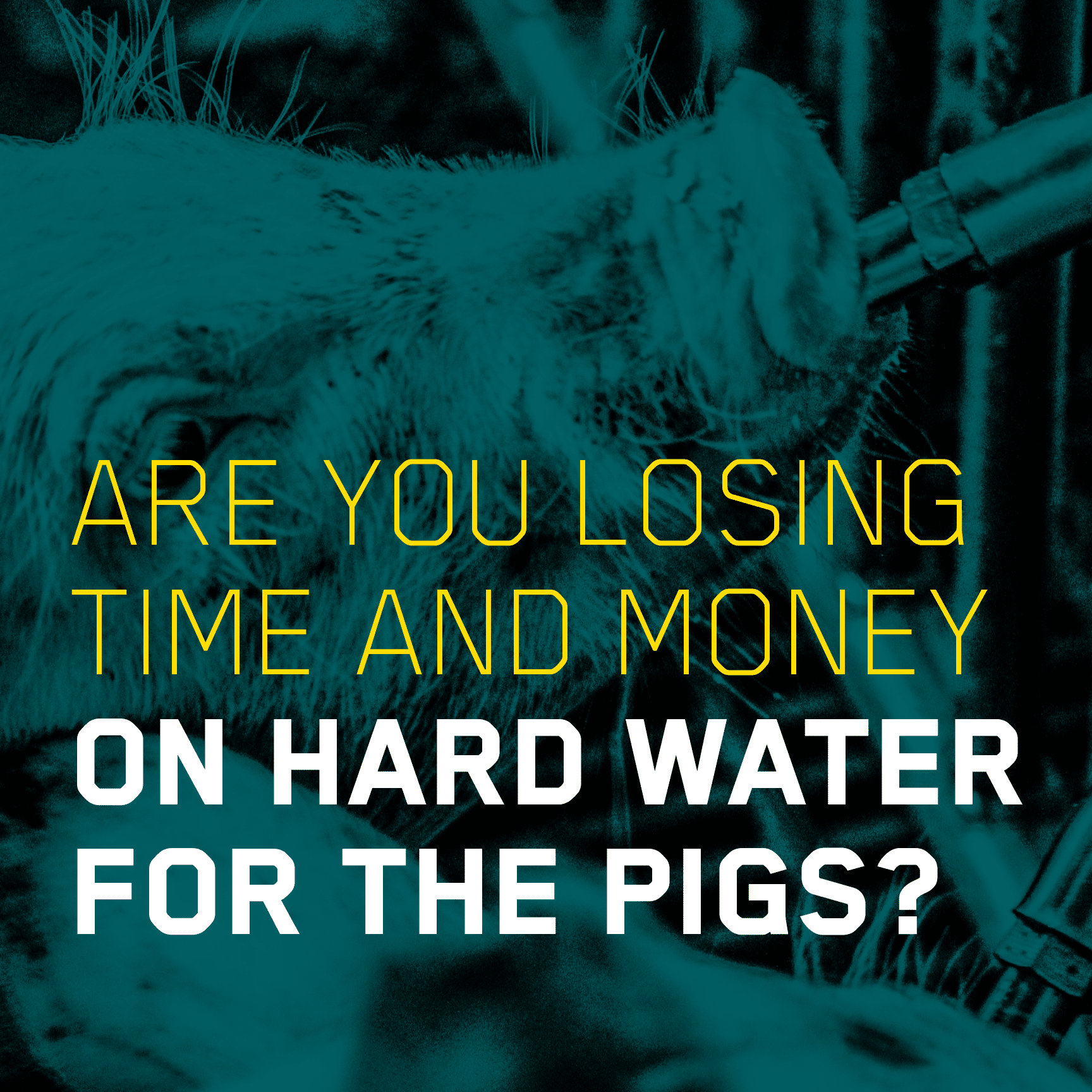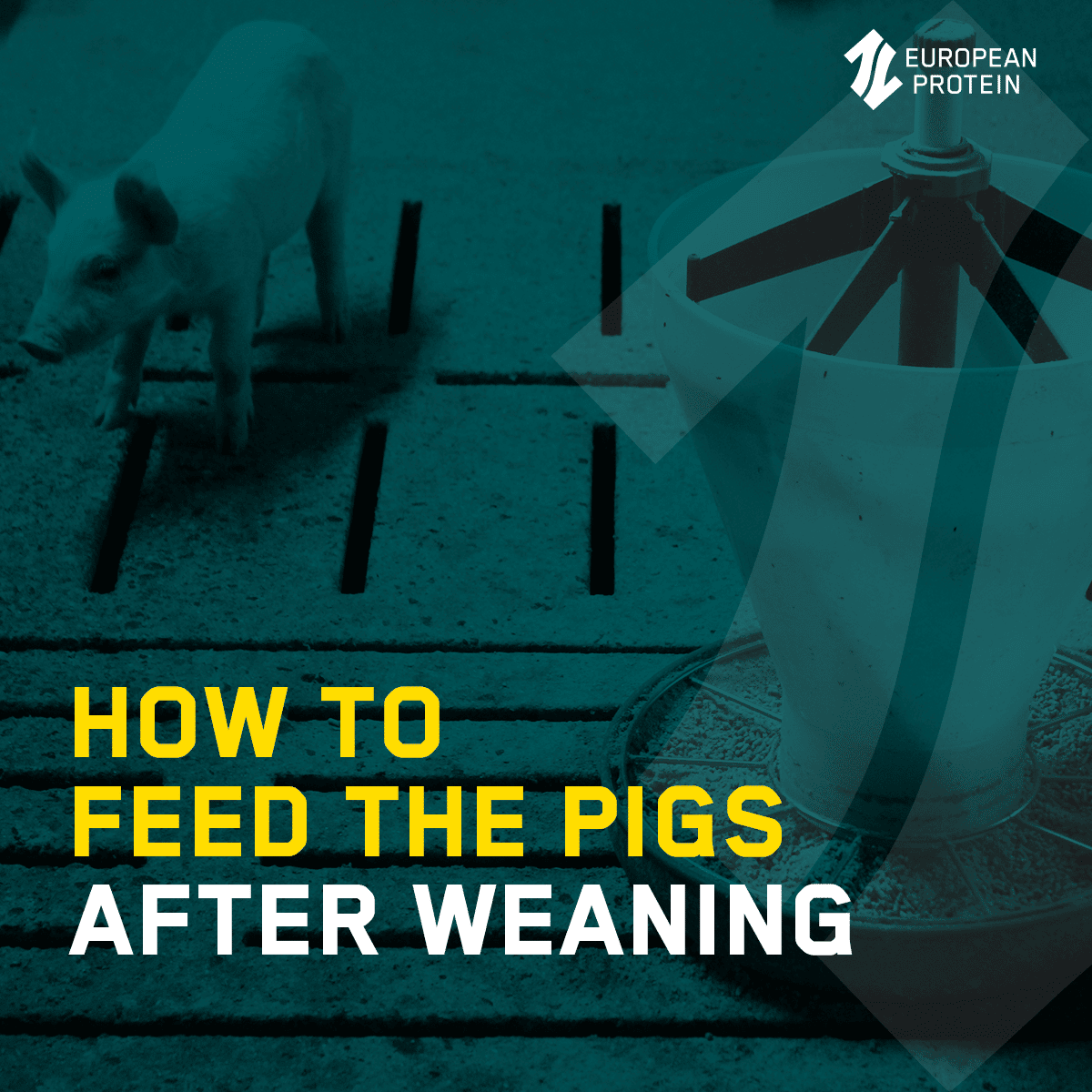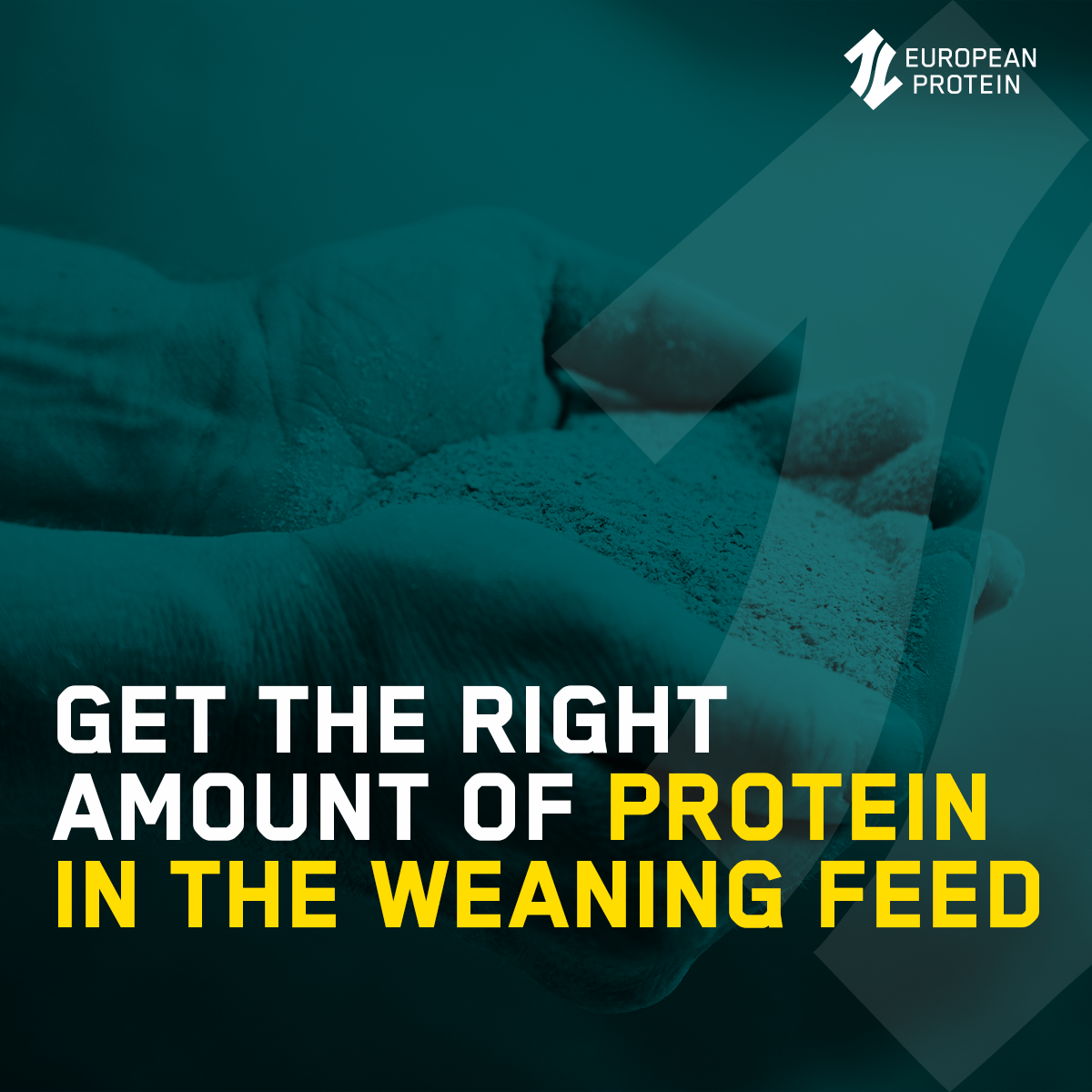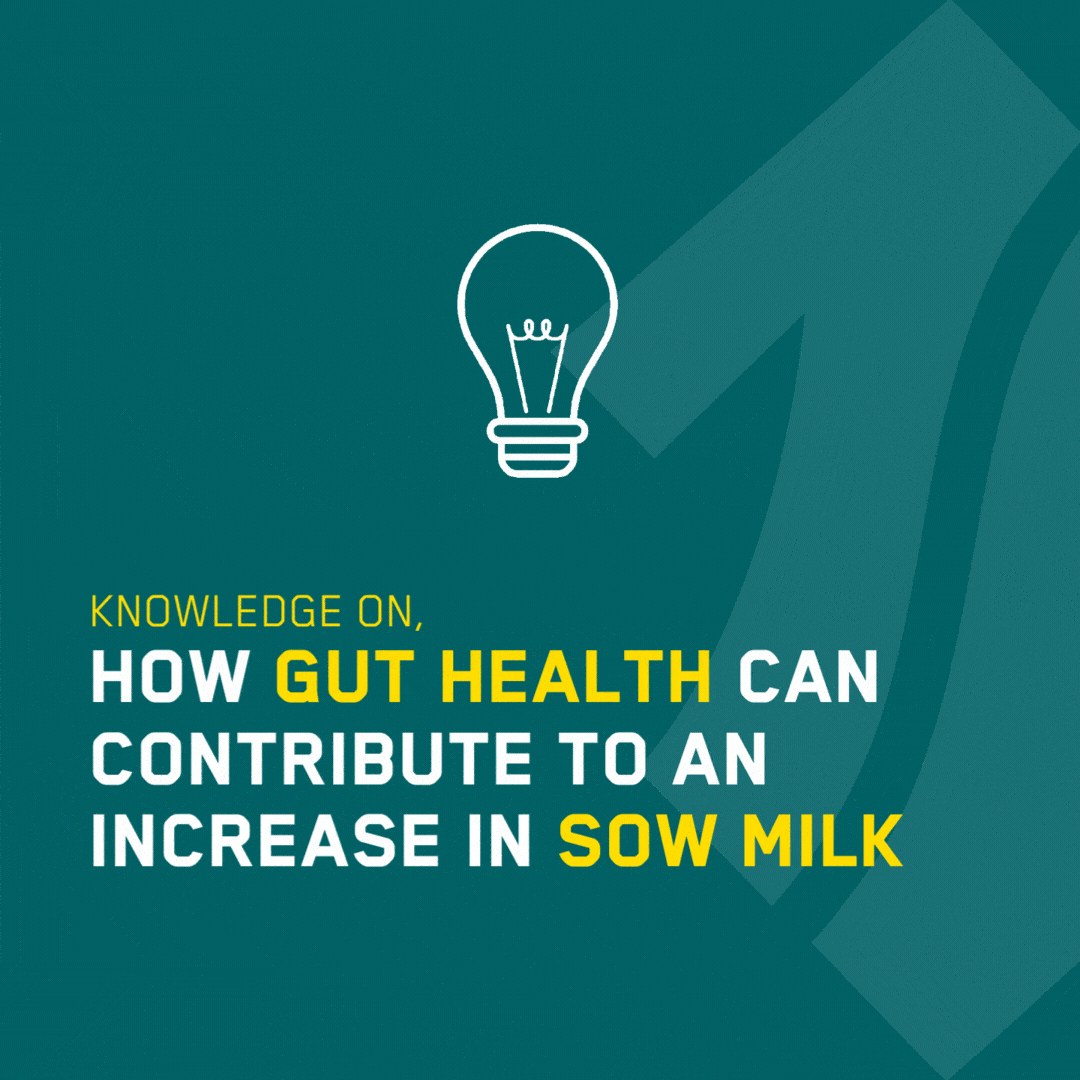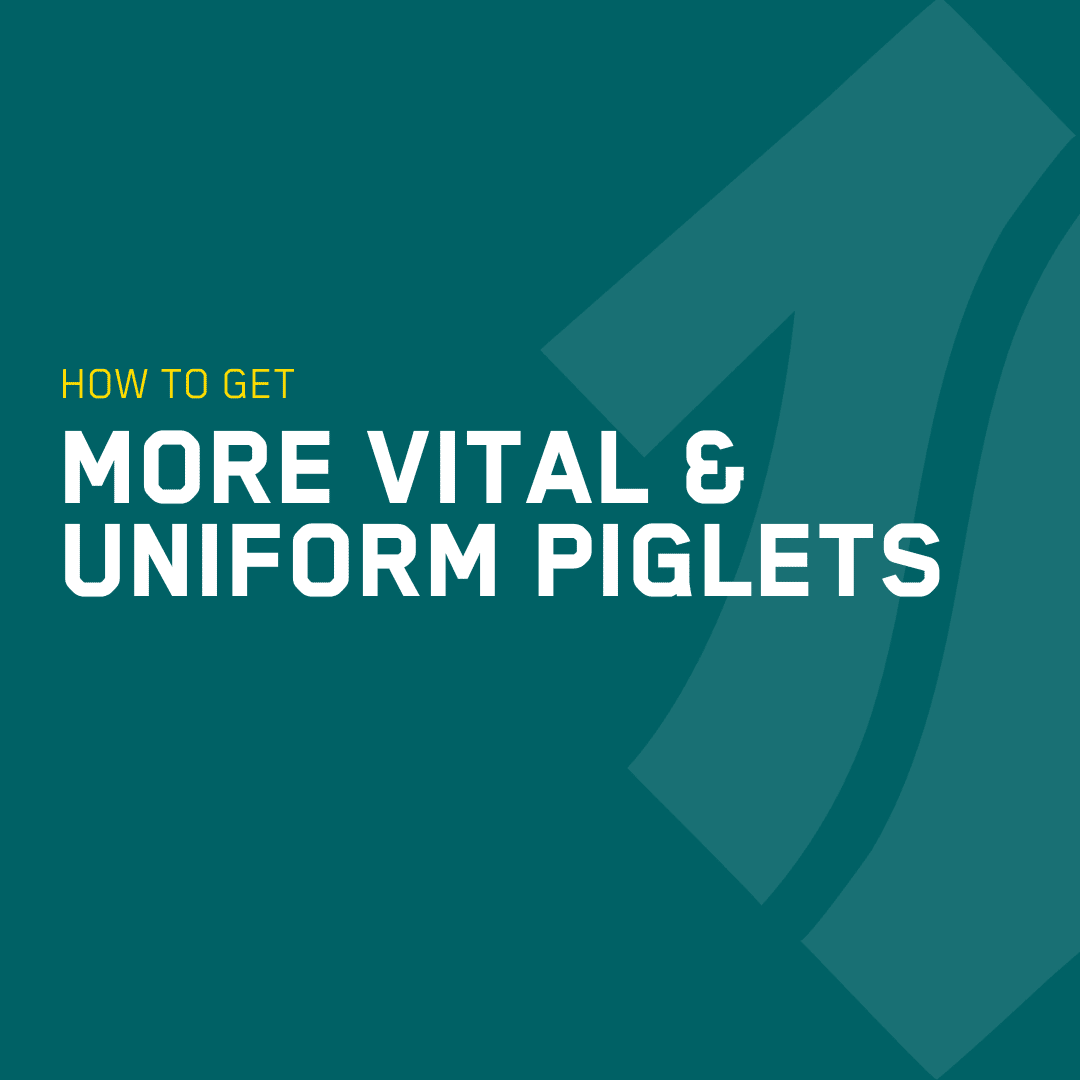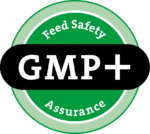TRAINING THE PIGLETS FOR FEED
In this post, you can learn more on how feed affects the guts.
If you want more practical advice for zinc-free weaning, you can download your guide for free here.
FEED TRAINING OF PIGLETS
The piglets need to learn how to eat before weaning, so you prevent the pigs from stagnating in the weaner section.
Feed training should accustom the gut to solid feed digestion and teach the piglet what to eat when the sow’s milk is gone.
Start feeding the piglets on day seven after farrowing. The rule is a little – but often.
Make regular routines and feed in the morning, after morning coffee, before lunch, after the lunch break, and before you go home.
A total of five daily feedings. Routines make feeding easier to remember, and you avoid postponing the task.

